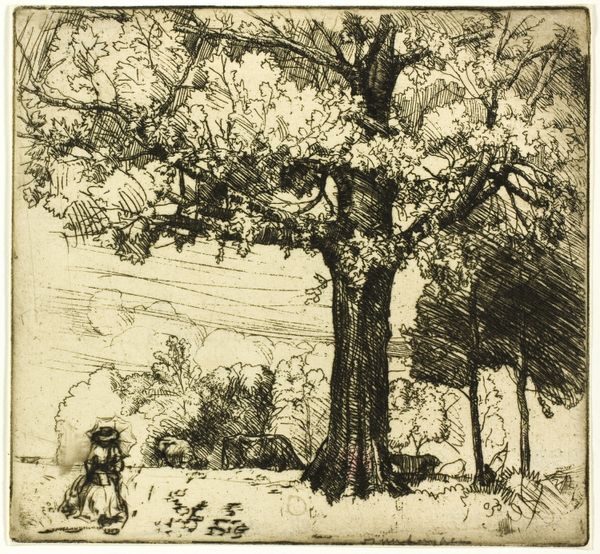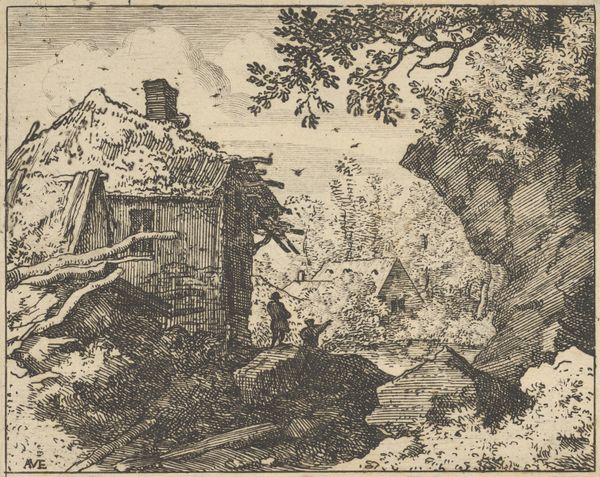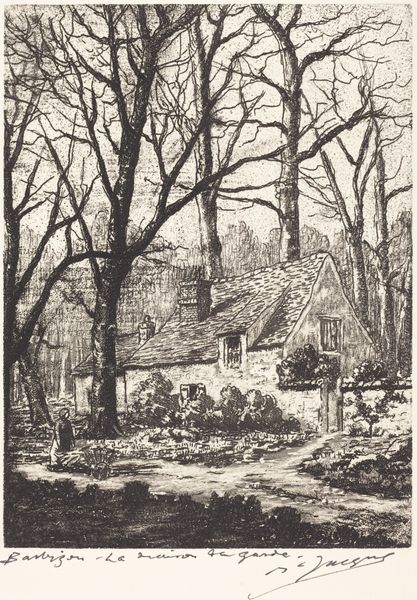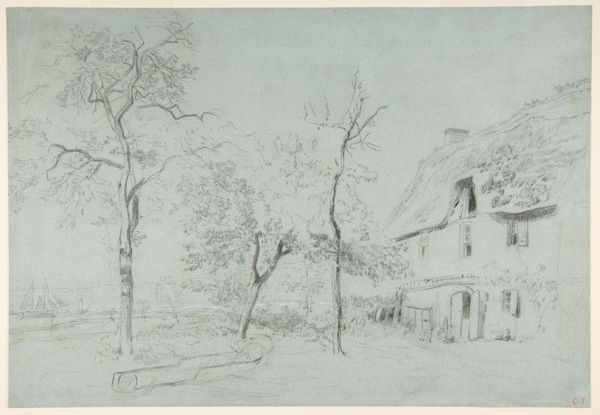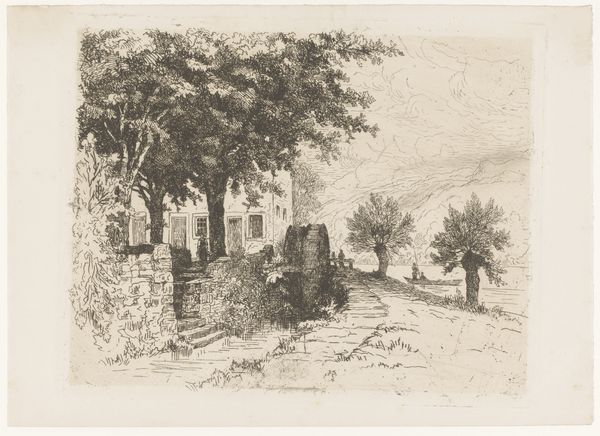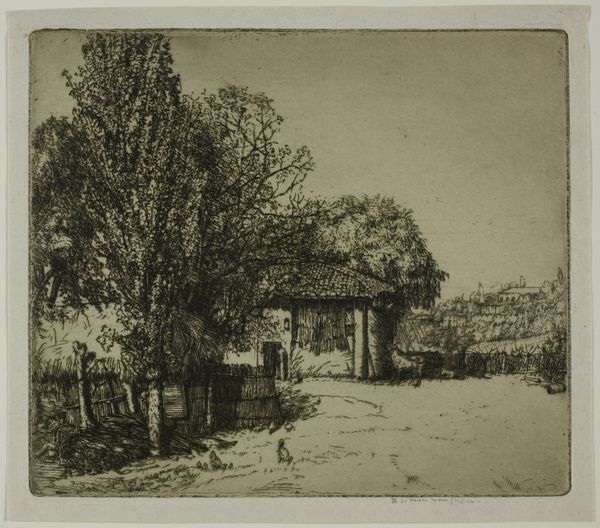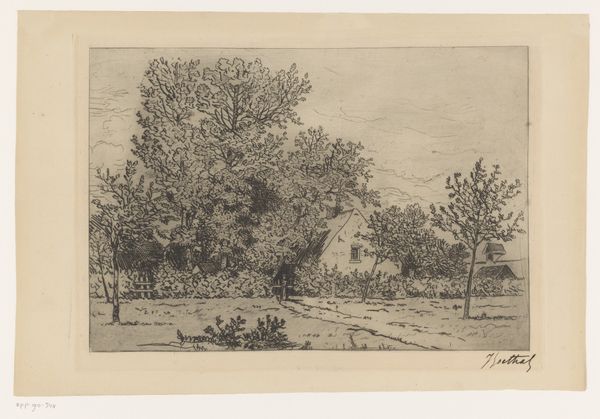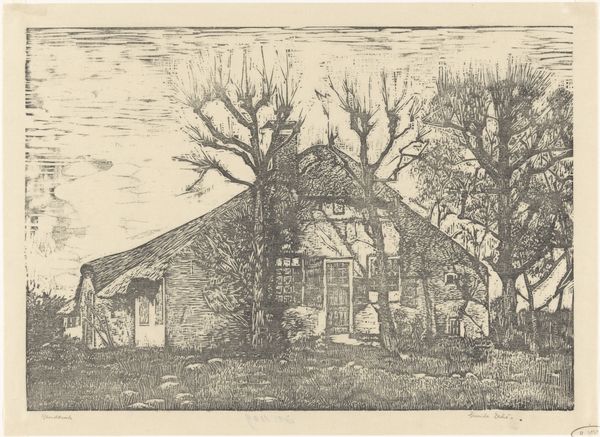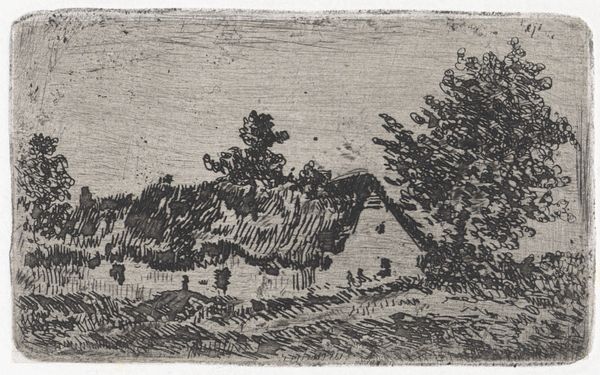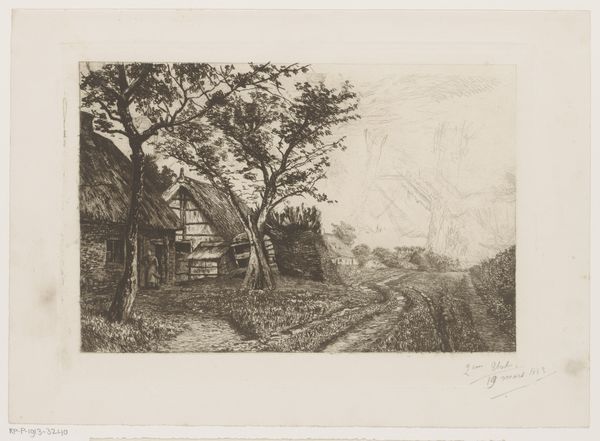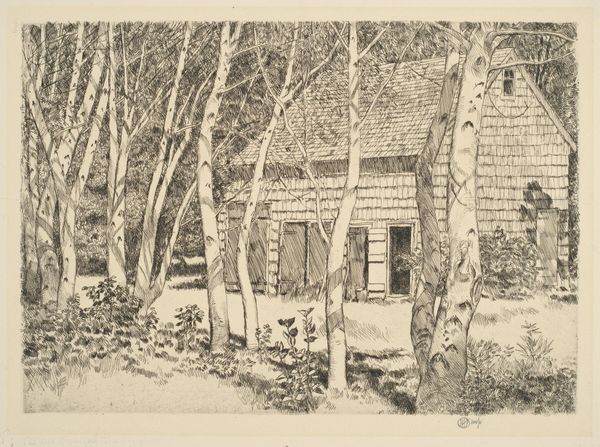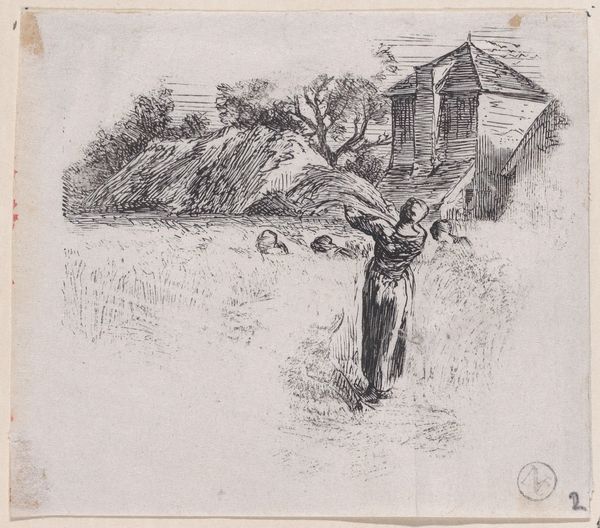
Dimensions: 220 × 239 mm (image/plate); 223 × 242 mm (sheet)
Copyright: Public Domain
Editor: Donald Shaw MacLaughlan’s etching, "Idillio, Venice," created in 1908, presents a fascinating glimpse of Venice. I find the foreground figure quite striking; almost an intrusion into an otherwise idyllic scene. What stories do you think this etching tells us? Curator: This etching captures more than just a picturesque view; it speaks to the shifting social and cultural dynamics of early 20th-century Venice. The lone figure, seemingly detached from the grandeur of the cityscape, might represent the alienation of the individual within a rapidly modernizing urban environment. Consider how Impressionism, the style associated with this work, often explored the individual's subjective experience. Editor: So, the figure isn't simply enjoying the scenery? Curator: Perhaps, but the placement is intentional, wouldn't you agree? The framing of the cityscape—the dome, obscured by nature—also reveals a tension between tradition and the encroaching forces of change. Was MacLaughlan commenting on tourism transforming Venice, altering its identity and pushing aside its inhabitants? Editor: That's a really interesting point. I hadn't considered the social commentary angle. The dome now seems less like a celebration of Venice, and more like a symbol of power. Curator: Exactly. The artist isn’t just capturing beauty, but presenting us with questions about who gets to enjoy that beauty, and at what cost. It compels us to think critically about the layers of history, power, and individual experience interwoven in this single image of Venice. Editor: I see it in a completely different light now. It’s incredible how much historical context changes your reading of a work. Curator: Indeed. It becomes a visual prompt for deeper inquiries. The interplay between the natural and built environment is so loaded, especially concerning social access to landscape and place. Editor: Thank you; this has made me appreciate how crucial a deeper historical understanding is to experiencing a piece.
Comments
No comments
Be the first to comment and join the conversation on the ultimate creative platform.
